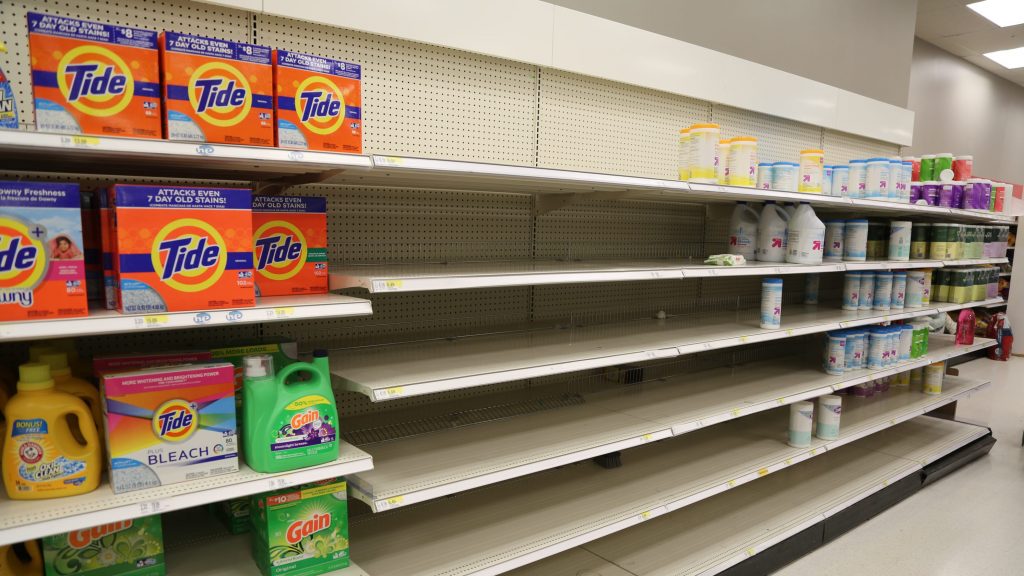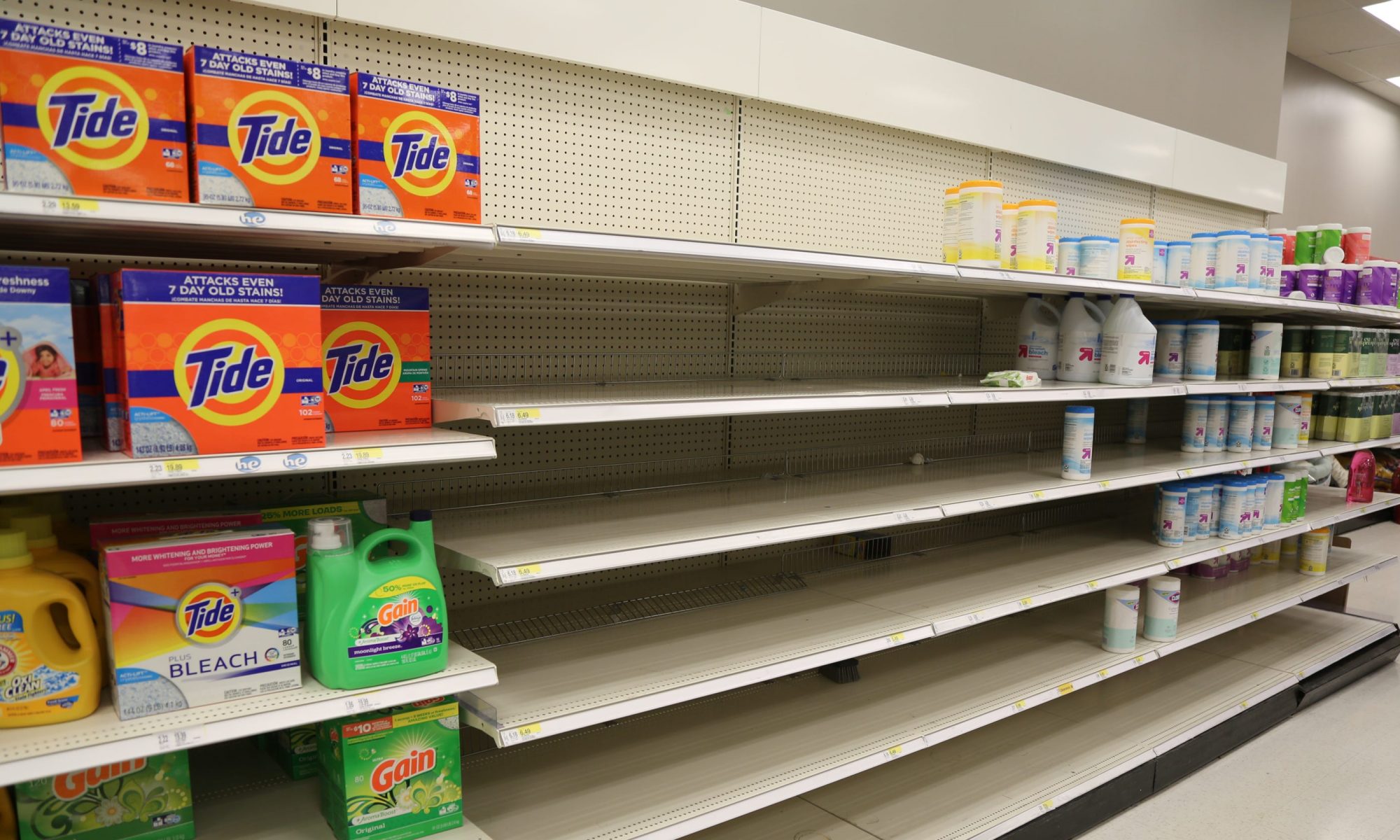
Precautions to take whether shopping in-store or online
By Tobie Stanger of Consumer Reports on March 9, 2020
With experts saying to avoid crowded places because of the novel coronavirus, what should you do about grocery shopping? One option people are turning to is grocery delivery services.
Instacart, one of the largest grocery delivery services, told us that over the past week its subscription growth swelled tenfold. In California, Washington, and New York—states where to date the most coronavirus cases have been reported—Instacart has seen a twentyfold growth.
“For older people and those with underlying health conditions—the group that the Centers for Disease Control and Prevention recommends stay home—I would highly recommend using a grocery delivery service,” says Jim Rogers, CR’s director of food safety research and testing.
But whether you buy groceries online or in stores, there are some simple steps you can take to try to limit your exposure to the novel coronavirus, and they’re not so different from what CR recommends you typically do. Be sure to:
Wash nonporous containers. Use dish soap on plastic, glass, and metal before putting them away. Simple rubbing with soap and water can kill the coronavirus because it tears apart the virus’s outer barrier.
Wash your hands, counter, and other surfaces you’ve touched. Do this after you’ve put away the groceries. Keep in mind that using disinfectant isn’t necessaryunless you’re sharing a space with someone who is exhibiting signs of respiratory illness or has been exposed to the virus.
Wash produce with running water. There’s no data to show that washing fruits and vegetables with soap will do a better job of eliminating coronavirus—or, more to the point, that the virus is spread by consuming those foods, Rogers says. But rubbing fruits and vegetables under running water—and scrubbing those with hard skins—can help remove pesticides.
Other steps may not make much difference. For instance, buying frozen vegetables rather than fresh under the assumption that they’re packed in a more sanitary way hasn’t been backed up by evidence, Rogers says.
If You’re Getting Your Groceries Delivered
Even if a grocery store or warehouse is thoroughly cleaned on a regular basis, the delivery person needs to take the same precautions to prevent the spread of a virus to you. Among the six services in our recent review of grocery delivery-services, AmazonFresh, Amazon Prime Now, Instacart, and Shipt all employ independent contractors for deliveries. (FreshDirect and Peapod delivery personnel are company employees; Walmart, which was not part of our ratings, uses DoorDash for deliveries.)
So while those companies may highly recommend that deliverers wash their hands often, practice other hygiene measures, and stay home when they’re feeling sick, they can’t monitor whether drivers are actually taking those precautions, says Erin Hatton, an associate professor of sociology and labor scholar at the University of Buffalo. “And without paid sick leave, workers are going to try to push through as much as they can,” Hatton says.
That said, follow these steps when ordering deliveries:
Avoid a direct hand-off. Arrange to have the items delivered to your doorstep or a place nearby instead. Instacart added that option last week; other companies have places on their order forms where you can indicate special delivery instructions. FreshDirect says its drivers will no longer bring your groceries into your home.
Tip electronically. One benefit of ordering deliveries online or via an app is that you don’t have to hand the delivery person money. Opportunities to tip the delivery person are included in most of the delivery apps and online ordering systems.
Order earlier than you normally do. Though it’s not a safety issue, you may find that in the midst of higher demand, you have to wait longer than normal. FreshDirect, for instance, mentions on its home page that delivery times are filling up faster than usual. AmazonPrime Now, which chiefly delivers from Whole Foods, also mentions that “availability may be limited,” though it’s not clear whether that means delivery times are limited or items are limited, or both. (An Amazon representative did not respond to a request for comment.)
If You’re Picking Up Prepacked Groceries
The steps are basically the same for this option as for delivery. If you’ve ordered in advance and are merely having someone put the groceries in your car in the parking lot—an option at around 3,000 Walmart locations nationwide—consider opening your car door yourself rather than having the person bringing the items to your car touch the handles. And if you can tip on the supermarket’s app, do so rather than handing over cash. (Walmart’s employees aren’t permitted to take tips.)
If You’re Buying Groceries In-Store
A key way to prevent the virus’s spread is to stay 6 feet away from other people. The Centers for Disease Control and Prevention notes that’s generally the distance within which people pick up coronavirus droplets through the air from a cough or sneeze. Such “social distancing” is a good strategy in any situation outside the home, Rogers suggests. Other ideas:
Go shopping at a time that’s less busy. If you type in the store’s name and location in Google search, a box often will pop up showing when foot traffic there is highest.
Take germicide with you. Use it to wipe your hands and the cart—both before and after you shop.
Use a credit or debit card. That way, you don’t have to hand over bills or receive change. Also, use your own pen to sign receipts. If you can, use a virtual payment system like Apple Pay so that you don’t have to open your wallet at all.

